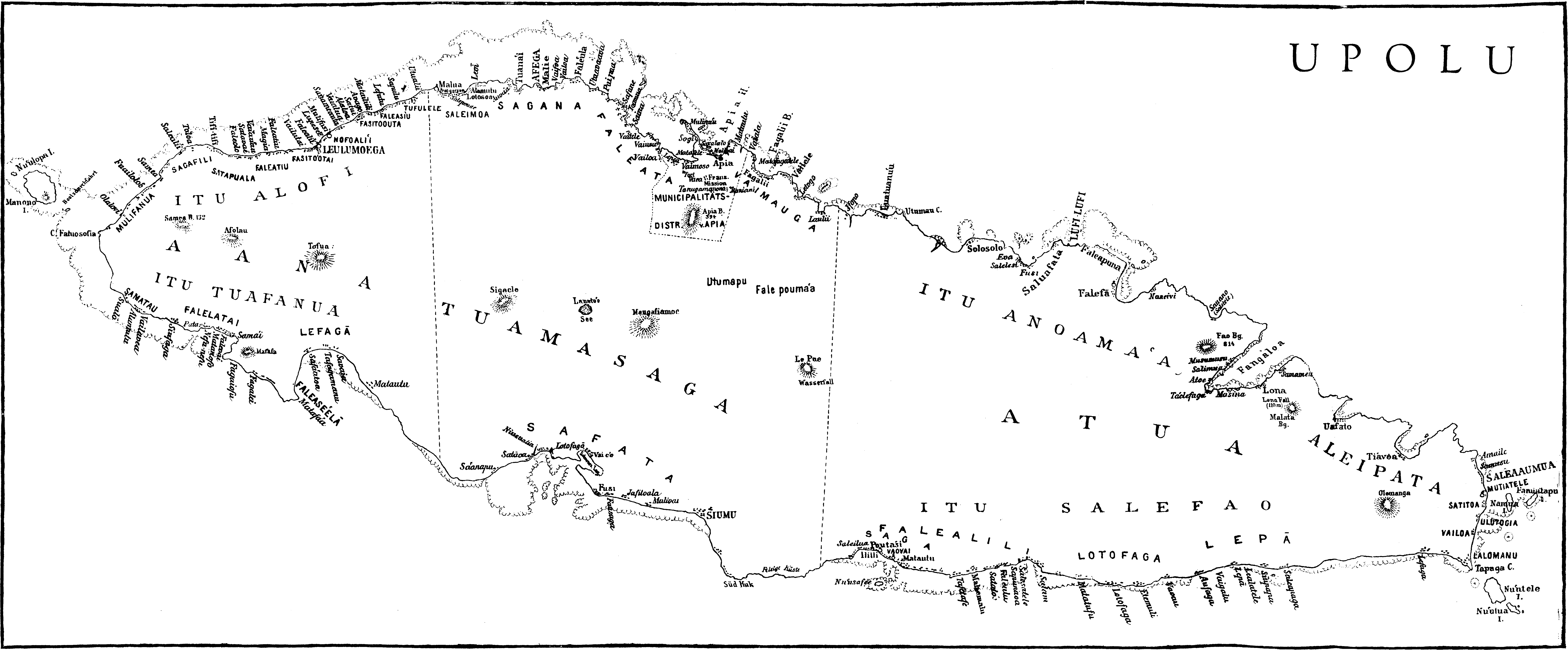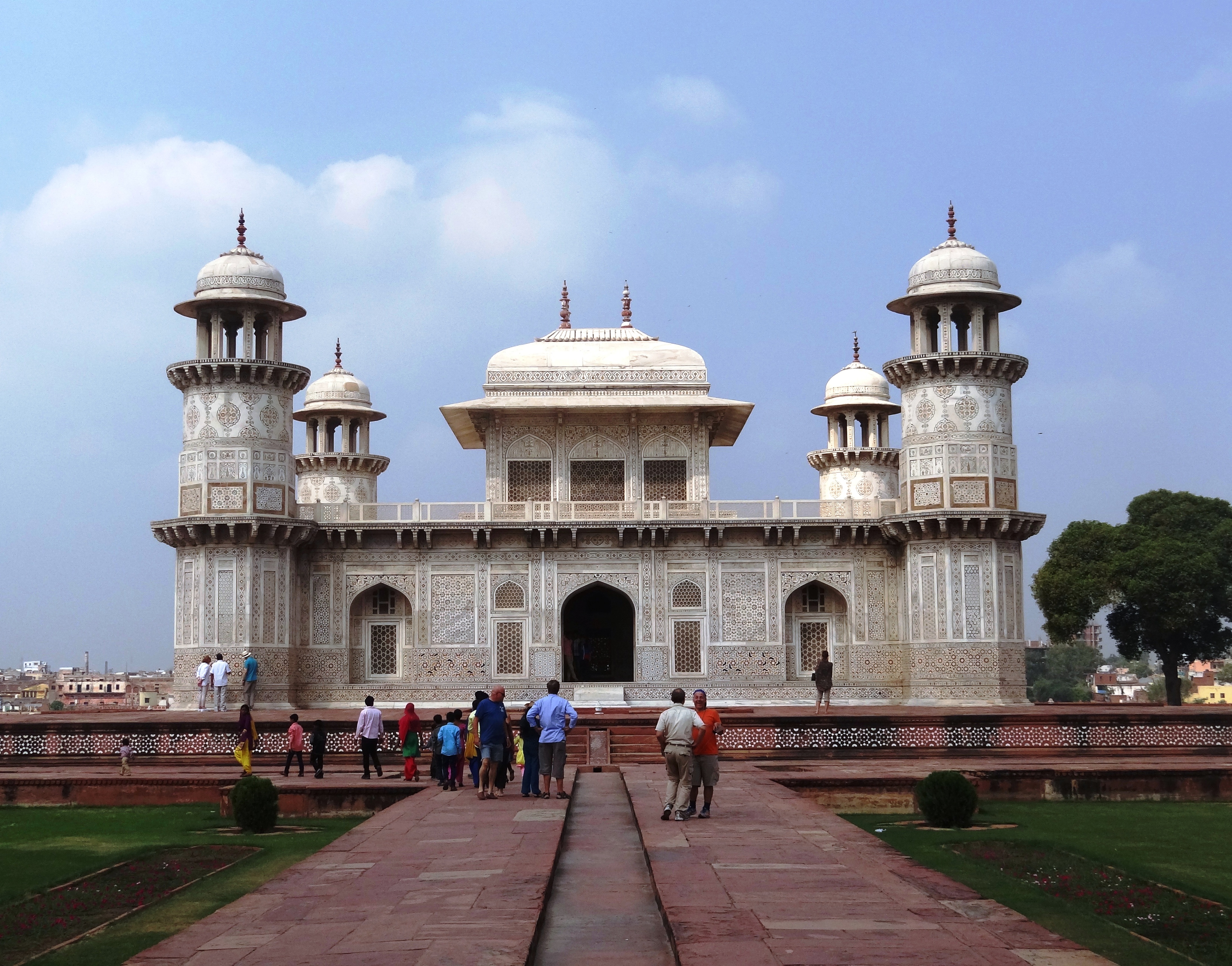|
Lepea
Lepea is a village on the island of Upolu in Samoa. The picturesque settlement of round Samoan houses built in a concentric pattern in large open grounds (''malae'') is situated 5mins drive west of the capital Apia on the north central coast of the island. It is part of the Tuamasaga electoral district. The village population is 606. A significant and high-ranking '' matai'' chief title from this village is Faumuina and the traditional residence for the title is in Lepea. The family title has been held by important national leaders in the country's history, including the first Prime Minister of Samoa, Fiame Mata'afa Faumuina Mulinu'u II (1921 - 1975) who lived in the village and whose state funeral was also held here. His father, also a paramount chief and a previous holder of the title was Mata'afa Faumuina Fiame Mulinu'u I, a leader of the country's pro-independence Mau movement. Both leaders also held the paramount chief title Mata'afa - one of the four ''tama-a-'aiga ... [...More Info...] [...Related Items...] OR: [Wikipedia] [Google] [Baidu] |
Mata'afa Faumuina Fiame Mulinu'u I
Mata'afa Faumuina Fiame Mulinu'u I (1889 — 27 March 1948)Mataafa Dead: Leading Samoan Chief ''Pacific Islands Monthly'', April 1948, p18 was a high chief of Samoa and a leader of the country's pro-independence Mau movement during the 1920's and 1930's. He was the holder of high-ranking ''ali'i'' chiefly titles: the Tama-a-'aiga Mata'afa, Fiame from and Faumuina from |
Mau Movement
The Mau was a non-violent movement for Samoan independence from colonial rule during the first half of the 20th century. ''Mau'' means ‘resolute’ or ‘resolved’ in the sense of ‘opinion’, ‘unwavering’, ‘to be decided’, or ‘testimony’; also denoting ‘firm strength’ in Samoan. The motto for the Mau were the words Samoa mo Samoa (Samoa for the Samoans). Similarly in Hawaiian ''Mau'' means to strive or persevere, and is often linked with Hawaiian poetry relating to independence and sovereignty struggles. The movement had its beginnings on the island of Savai'i with the ''Mau a Pule'' resistance in the early 1900s with widespread support throughout the country by the late 1920s. As the movement grew, leadership came under the country's chiefly elite, the customary '' matai'' leaders entrenched in Samoan tradition and fa'a Samoa. The Mau included women who supported the national organisation through leadership and organisation as well as taking part ... [...More Info...] [...Related Items...] OR: [Wikipedia] [Google] [Baidu] |
Tupua Tamasese Lealofi III
Tupua Tamasese Lealofi-o-ā'ana III (4 May 1901 – 29 December 1929) was a paramount chief of Samoa, holder of the Tupua Tamasese dynastic title and became the leader of the country's pro-independence Mau movement from early 1928 until his assassination by New Zealand police in 1929. Inspired by his Christian beliefs, traditional customs and culture of Samoa, Lealofi III became one of the first leaders of the 20th century to employ nonviolent resistance against colonial rule which laid the foundations for Samoa's successful campaign for independence, which it attained in 1962. He was fatally shot by New Zealand police during a peaceful Mau procession in Apia on 28 December 1929, in what became known as Black Saturday. Mau movement In 1924 Tamasese was banished to Savai'i by Administrator George Spafford Richardson for failing to remove a hibiscus hedge from his land. When he returned to inquire about the length of his banishment, he was imprisoned, deprived of his title, a ... [...More Info...] [...Related Items...] OR: [Wikipedia] [Google] [Baidu] |
Upolu
Upolu is an island in Samoa, formed by a massive basaltic shield volcano which rises from the seafloor of the western Pacific Ocean. The island is long and in area, making it the second largest of the Samoan Islands by area. With approximately 145,000 inhabitants, it is by far the most populous of the Samoan Islands. Upolu is situated to the southeast of Savai'i, the "big island". Apia, the capital, is in the middle of the north coast, and Faleolo International Airport is at the western end of the island. The island has not had any historically recorded eruptions, although there is evidence of three lava flows, dating back only to between a few hundred and a few thousand years ago. In the Samoan branch of Polynesian mythology, Upolu was the first woman on the island. James Michener based his character Bloody Mary in '' Tales of the South Pacific'' (later a major character in the Rodgers and Hammerstein musical, ''South Pacific'') on the owner of Aggie Grey's Hotel ... [...More Info...] [...Related Items...] OR: [Wikipedia] [Google] [Baidu] |
Samoa
Samoa, officially the Independent State of Samoa; sm, Sāmoa, and until 1997 known as Western Samoa, is a Polynesian island country consisting of two main islands (Savai'i and Upolu); two smaller, inhabited islands (Manono Island, Manono and Apolima); and several smaller, uninhabited islands, including the Aleipata Islands (Nu'utele, Nu'ulua, Fanuatapu and Namua). Samoa is located west of American Samoa, northeast of Tonga (closest foreign country), northeast of Fiji, east of Wallis and Futuna, southeast of Tuvalu, south of Tokelau, southwest of Hawaii, and northwest of Niue. The capital city is Apia. The Lapita culture, Lapita people discovered and settled the Samoan Islands around 3,500 years ago. They developed a Samoan language and Samoan culture, Samoan cultural identity. Samoa is a Unitary state, unitary Parliamentary system, parliamentary democracy with 11 Administrative divisions of Samoa, administrative divisions. It is a sovereign state and a member of the ... [...More Info...] [...Related Items...] OR: [Wikipedia] [Google] [Baidu] |
Apia
Apia () is the capital and largest city of Samoa, as well as the nation's only city. It is located on the central north coast of Upolu, Samoa's second-largest island. Apia falls within the political district (''itūmālō'') of Tuamasaga. The Apia Urban Area (generally known as the City of Apia) has a population of 37,391 (2016 census). Its geographic boundaries extend roughly from Letogo village to the newer, industrialized region of Apia known as "Vaitele". History Apia was originally a small village (the 1800 population was 304), from which the country's capital took its name. Apia Village still exists within the larger modern capital of Apia, which has grown into a sprawling urban area that encompasses many villages. Like every other settlement in the country, Apia Village has its own ''matai'' (leaders) and ''fa'alupega'' (genealogy and customary greetings) according to fa'a Samoa. The modern city of Apia was founded in the 1850s, and it has been the official capital ... [...More Info...] [...Related Items...] OR: [Wikipedia] [Google] [Baidu] |
Tuamasaga
Tuamāsaga is a district of Samoa, with a population (2016 Census) of 95,907. The geographic area of Tuamasaga covers the central part of Upolu Upolu is an island in Samoa, formed by a massive basaltic shield volcano which rises from the seafloor of the western Pacific Ocean. The island is long and in area, making it the second largest of the Samoan Islands by area. With approxim ... island. History & Politics Malie & the Malietoa The paramount ''matai'' title of Tuamasaga is the Malietoa title. Led by Auimatagi, Sa Malietoa and the nine senior orators of Malie are responsible for the election of the Malietoa title-holder at Niu'ula in Malie. Given that the district of Aiga-i-le-Tai ( Manono and Apolima) and the district of Fa'asaleleaga on Savai'i are two key footholds of the Aiga Sa Malietoa (Malietoa clan), Malie often consults with Manono (capital of Aiga-i-le-Tai) and Safotulafai (capital of Fa’asaleleaga) in the election of the Malietoa. The village o ... [...More Info...] [...Related Items...] OR: [Wikipedia] [Google] [Baidu] |
Tomb Of Tupua Tamasese Lealofi III In Lepea Village, Samoa
A tomb ( grc-gre, τύμβος ''tumbos'') is a repository for the remains of the dead. It is generally any structurally enclosed interment space or burial chamber, of varying sizes. Placing a corpse into a tomb can be called ''immurement'', and is a method of final disposition, as an alternative to cremation or burial. Overview The word is used in a broad sense to encompass a number of such types of places of interment or, occasionally, burial, including: * Architectural shrines – in Christianity, an architectural shrine above a saint's first place of burial, as opposed to a similar shrine on which stands a reliquary or feretory into which the saint's remains have been transferred * Burial vault – a stone or brick-lined underground space for multiple burials, originally vaulted, often privately owned for specific family groups; usually beneath a religious building such as a church ** Cemetery ** Churchyard * Catacombs * Chamber tomb * Charnel house * Church mon ... [...More Info...] [...Related Items...] OR: [Wikipedia] [Google] [Baidu] |
Paramount Chief
A paramount chief is the English-language designation for the highest-level political leader in a regional or local polity or country administered politically with a chief-based system. This term is used occasionally in anthropological and archaeological theory to refer to the rulers of multiple chiefdoms or the rulers of exceptionally powerful chiefdoms that have subordinated others. Paramount chiefs were identified by English-speakers as existing in Native American confederacies and regional chiefdoms, such as the Powhatan Confederacy and Piscataway Native Americans encountered by European colonists in the Chesapeake Bay region of North America. During the Victoria era, paramount chief was a formal title created by British colonial administrators in the British Empire and applied in Britain's colonies in Asia and Africa. They used it as a substitute for the word "king" to ensure that only the British monarch held that title.Government Documents. Great Britain. Foreign O ... [...More Info...] [...Related Items...] OR: [Wikipedia] [Google] [Baidu] |






